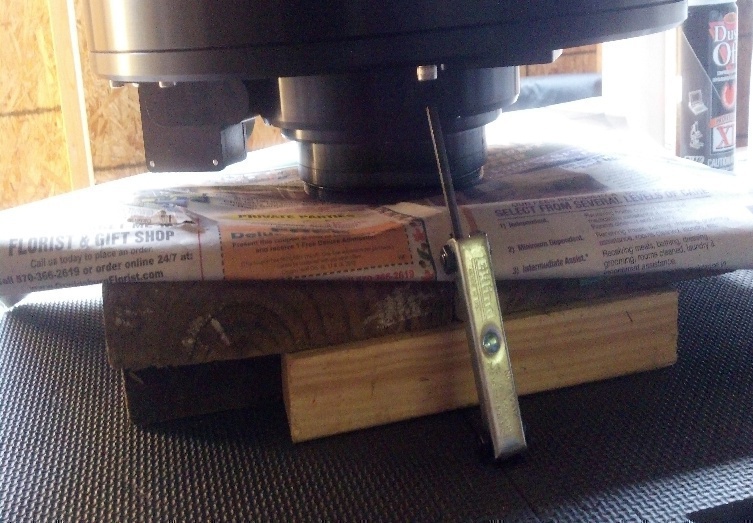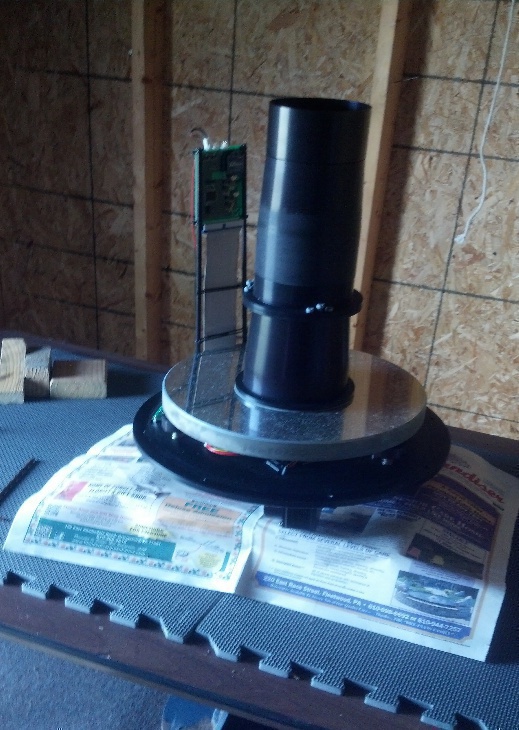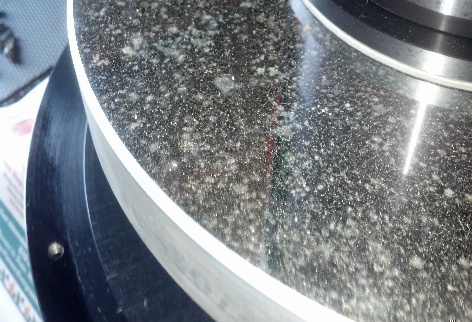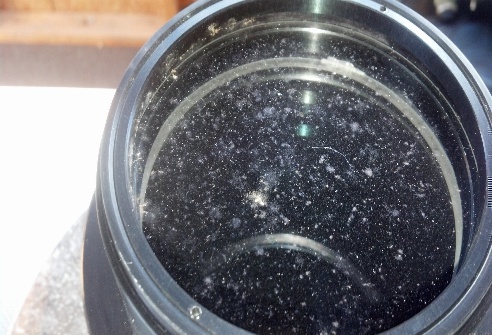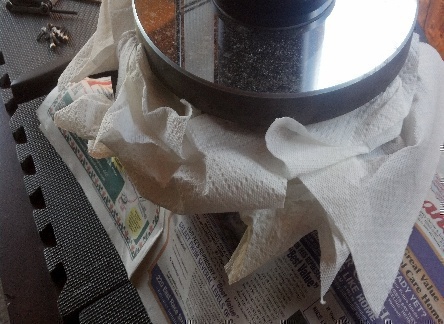Cleaning my Hyperion 12.5 (Tube) mirror
By Frank Colosimo
October 2012
It took some courage, but eventually I had to clean the mirror on my Hyperion. It had became quite covered
with dust, pollen, and fibers that became stuck on nights of heavy dew. The procedures below worked for me,
but please talk to Hyperion Support before undertaking anything on your own. My scope was an early one -
number 4 I think - and yours may be different, and in any case, I can't be responsible if these procedures don't
work for you.
I received this advice from Starizona: "We have a tool available for removing the focuser. In answer to your
question, you could remove the focuser and set the scope rotator end down gently on cardboard. Then lift the
tube off. I would then use Pec Pads and water/dawn dish soap solution and then methanol to clean (we stock).
Not a spray bottle or lots of water." I called them back a month or so later to refresh my memory on this and
they recommended acetone instead of methanol. They said methanol was better for glass, acetone for
mirrors.
I removed the focuser while the scope was on the mount and also made sure the bolts that held the tube to the
backplate were not too tight (I loosened them to where they would turn and then retightened them one by one).
I then removed the scope from the mount and placed it on cardboard on a table with the secondary down and
the primary up.
I disconnected the plug on the
end of the circuit board at the
front of the scope. I then was able
to reach under the scope and
remove the outer 8 bolts holding
the tube to the backplate. I then
carefully lifted off the tube and set
it aside. I was pleased that this
was so easy, and it left the heavy
part of the scope sitting on the
table.
The mirror was pretty dirty and so was the corrector.
I blew off what I could (uhh, nada, pretty much) and then got some paper towels
under the mirror to prevent run off.
I sprayed the recommended 'distilled water plus a drop of Dawn' on the mirror and let it soak for a while. I then used
clean, moistened Pec Pads to lightly move the debris to the side and off the mirror. I have never seen so much junk on
a mirror - you could see a wad of collected material build up on the pad as it was dragged across the surface! I kept
everything wet and went around a couple of times until things looked better. I then used the recommended acetone to
wet down a pad and drag across the surface. This was supposed to remove things that water+soap didn't and eliminate
streaks.
There was some material that was dissolved by the acetone so that was fine. However, the acetone did not remove any
streaks without leaving new ones that were just as bad. I went around a couple of times before I felt that I was not
making ANY progress and touching the mirror WAY too much. I tried a Pec Pad with distilled water but these pads
seemed almost hydrophobic - they would not really wet well enough to do the final swabbing.
I resorted to the old standby for mirror cleaning - squares of Viva paper towels. These are made from some kind of
fiberless material that does not leave any lint, and they are very soft. (Thanks to Rick Yandrick - who did several years
of imaging here at BMV - for that suggestion!).
I was able to remove major streaks at this point. You would usually do a final wipe-down with an almost-dry piece of
Viva at this point, but I felt that things looked pretty good and I had touched the mirror enough at this point. I left some
slight streaks on the mirror that were only visible via a bright light at just the right angle.
I unscrewed the baffle tube (Starizona suggested squeezing it very slightly if it refused to turn and I think I had to do this
to get it started). This exposed the corrector so I could clean it, too.
I used the same water-detergent solution to remove the surface dirt, followed with a damp Viva and this cleaned it up
pretty nicely without using a solvent.
I should have taken a picture at this point, but I apparently didn't.
I reversed the procedure to reassemble the scope.
I was very relieved to find out afterwards that the collimation did not appear to be affected by the procedure and I was
able to continue my imaging.
Blue Mountain Vista Observatory New RInggold PA
